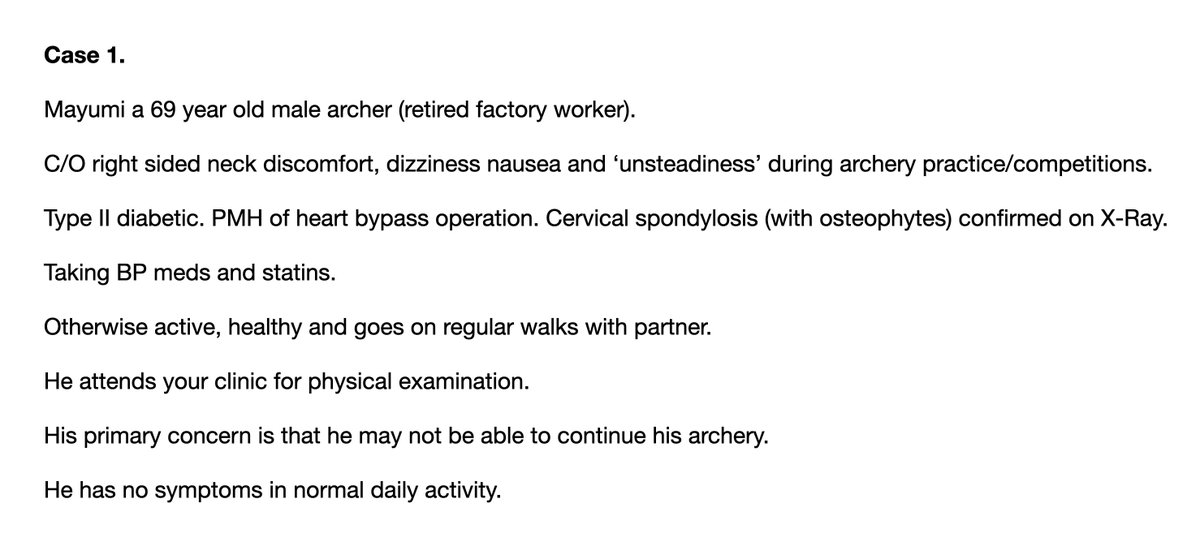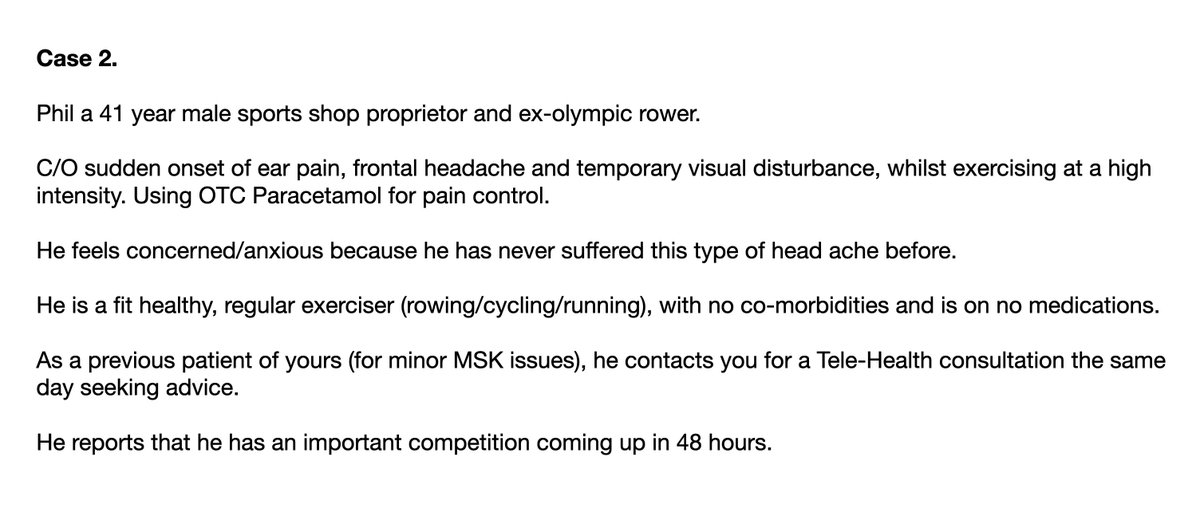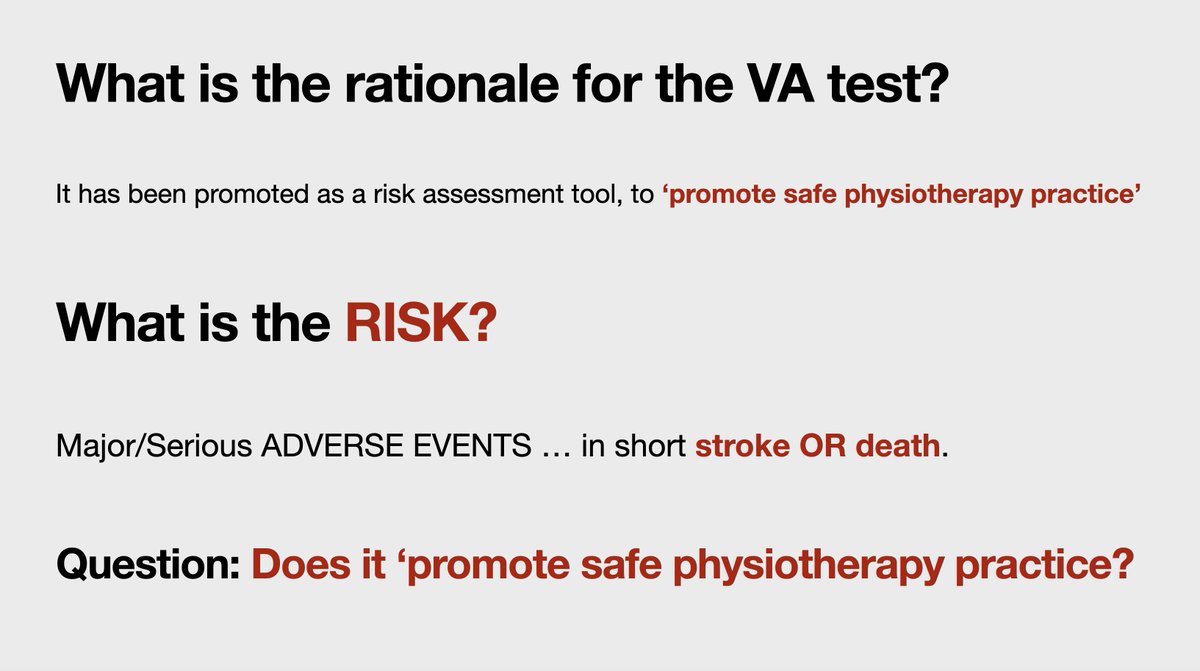I’m in a graveyard.
Why?
#Risk #CervicalSpine #VertebralArtery #Physiotherapy #PhysicalTherapy
Part III - Risk Assessment of The Cervical Spine
... coming VERY soon! 👀
Why?
#Risk #CervicalSpine #VertebralArtery #Physiotherapy #PhysicalTherapy
Part III - Risk Assessment of The Cervical Spine
... coming VERY soon! 👀
Part III - Risk Assessment of The Cervical Spine: Directions For The Future
If the vertebral artery test truly is dead (?), where do we go from here?
#CervicalSpine #RiskAssessment #FCP #Physiotherapy #PhysicalTherapy #ClinicalReasoning #Haemodynamics
If the vertebral artery test truly is dead (?), where do we go from here?
#CervicalSpine #RiskAssessment #FCP #Physiotherapy #PhysicalTherapy #ClinicalReasoning #Haemodynamics
Thanks to @RikKranenburg @NathanHutting @RogerKerry1 and the Australian Physiotherapy Association for providing me with the impetus to think about, and produce these short films. #Haemodynamics #RiskAssessment #CervicalSpine #FCP #Physiotherapy #PhysicalTherapy #Education 

• • •
Missing some Tweet in this thread? You can try to
force a refresh











